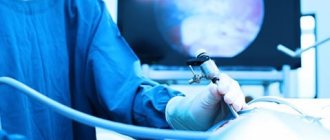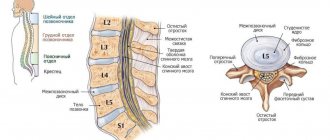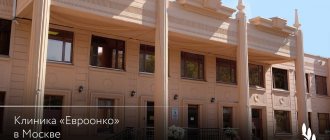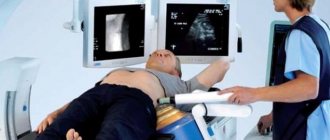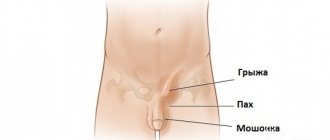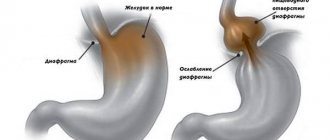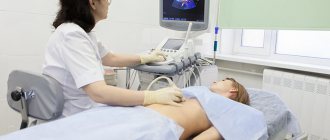The occurrence of such hernias is due to the peculiarities of the anatomical structure of the anterior abdominal wall. The main support that supports the shape of the abdominal wall is made up of a muscular frame, which is located in several layers. The muscular layer is lined with a connective tissue membrane that supports the anterior wall of the abdomen and forms fascia, which provides connection with the muscular layer, as well as covering areas not protected by the muscular layer.
The anatomy of the abdominal structure is such that all its muscles are topographically located symmetrically to the left and right relative to the midline, which itself is not covered by the muscular component. The fascia covering the right and left rectus abdominis muscles not only connects them to each other, but also strengthens the abdominal wall as a whole, acting as a frame. This fascia is white in color, which is why the midline is also called the “linea alba.” The width of this line varies throughout its entire length and is not the same in different sections: above the umbilical ring it is always wider - from 1 to 3 centimeters, below the level of the umbilical ring it narrows from several millimeters to 1 centimeter. Due to its specific structure, the white line of the abdomen is more susceptible to herniation slightly above the navel.
How common are hernias of the white line of the abdomen?
The most common hernias are inguinal and umbilical, while hernias of the white line of the abdomen are much less common. This type of hernia mostly affects women after pregnancy and young men who engage in heavy physical activity.
There are many reasons for the formation of white line hernias.
The most significant factor may be genetic predisposition. Inherited physiological and anatomical failure of the connective tissue structures of the body can lead to stretching of the linea alba, the formation of ectasia (expansion) of the rectus abdominis muscles, which subsequently entails thinning of the fascia; dilatations and gaps form in it, through which the formation of a hernia is possible.
Metabolic disorders, diabetes mellitus and other pathological conditions of the body that lead to changes in metabolic processes can cause depletion of the connective tissue structure of the white line. There are many diseases that can lead to a tendency to herniation, as well as effects that lead to an increase in pressure in the abdominal cavity: accumulation of fluid in it, heavy physical activity, pregnancy, difficult childbirth, chronic lung diseases, chronic constipation .
Stages of formation of a hernia of the white line
The formation of this type of hernia occurs in several stages.
- At the earliest stage, usually invisible to the patient, preperitoneal adipose tissue protrudes through the slit-like defect in the connective tissue, forming a so-called preperitoneal lipoma.
- Following this, the peritoneum is stretched and a hernial sac is formed, which can be palpated. Subsequently, at the stage of an already formed hernia, other abdominal organs are involved: omentum, loops of the small intestine, umbilical-hepatic ligament, transverse colon. At this stage of an already formed hernia, absolutely all components of the pathological process can be detected: the hernial orifice and the hernial sac with hernial contents. The risk of strangulation of a hernial protrusion, as a very dangerous condition, directly depends on the shape and size of the hernial orifice, the size of which can vary from several millimeters to several centimeters and take the shape of an oval, circle or even a rhombus; Moreover, the smaller the gate, the higher the likelihood that the hernia will suddenly be strangulated.
It is rare, but it happens that the type of hernia described in this article reaches large sizes; in their total mass they are relatively small. Often, the formation of a hernia does not occur beyond the stage of preperitoneal lipoma, which does not cause pain, and without the influence of aggravating factors does not evolve in progression and does not spread beyond the boundaries of the white line.
How is laparoscopic hernioplasty performed?
A puncture is made in the navel area, through which a laparoscope equipped with a video camera and a light source is inserted into the abdominal cavity. The video camera transmits an image of the organs to the monitor, which allows the surgeon to see what he is doing. Through the other two holes, surgical instruments necessary for the operation are inserted. The mesh implant is applied to the hernial opening from the inside of the abdominal cavity, which ensures uniform distribution of pressure over a large area. The mesh is secured with staples or sutures.
Hernia removal
The operation is performed under general anesthesia. On average, the operation itself lasts 1 hour.
Manifestations of hernia of the white line of the abdomen
The disease can be suspected if a small bulge is suddenly palpated in the midline of the patient's abdomen. Very often it does not cause pain and can be discovered accidentally by the patient himself or by the doctor during examination. Due to the fact that in a normal state the neoplasm, as such, may not cause pain, one of the indicators that allows one to suspect it is the appearance of pain during heavy work, after eating, or in other situations that lead to increased intra-abdominal pressure. An increase in pain may be associated with tension in organs and other structures fixed to the hernial sac, or as a result of strangulation of the contents of the hernial protrusion, which in turn requires emergency surgical intervention. Painful sensations can radiate to various areas of the chest, abdomen and back. When the muscles of the abdominal wall are relaxed in a horizontal position on the back, the hernial protrusion, and with it the pain, often disappears. In the event of such a formidable and extremely dangerous complication as a strangulated hernia, all the symptoms of an acute abdomen occur and general intoxication of the body increases: the temperature rises, piercing, intensely intensifying abdominal pain appears, nausea and vomiting, retention of stool and gases, and bloody discharge in the stool. , and the hernial protrusion can no longer be reduced in the supine position. Often the symptoms accompanying the disease are disorders of the digestive system such as nausea, heartburn, belching, associated with the entry of the digestive tract into the hernial sac.
Postoperative hernia surgery cost
| Postoperative hernia: hernioplasty | 46,000 rub. |
| Postoperative hernia: advanced hernioplasty | 51,000 rub. |
| Postoperative hernia: hernioplasty of recurrent hernia | 63,000 rub. |
| Postoperative hernia: endoscopic hernioplasty | 87,000 rub. |
| Hernioplasty with abdominoplasty | 260,000 190,000 rub. |
The cost of an operation to eliminate an incisional hernia includes all necessary examinations and dressings, as well as observation by a surgeon for six months after the operation.
Operations to remove a postoperative hernia are performed by highly qualified herniologist surgeons with extensive experience, trained in Russia and abroad:
| Gaboyan Aram Sergeevich, Doctor of Medical Sciences | Soboleva Polina Yurievna, Candidate of Medical Sciences | Malkarov Marat Azretovich, Candidate of Medical Sciences |
Diagnosis of hernia of the white line of the abdomen
Diagnosing a hernia of the white line of the abdomen for a doctor does not require any complex examination. When collecting anamnesis and examination, when the muscles of the anterior abdominal wall are tense, a hernial protrusion can be visualized, and the patient may note that in this condition he has pain in this area of the abdomen. In addition to visual inspection, palpation is necessary, during which a dense oval or round structure in the area of the protrusion is determined in sizes from less than 1 cm to more than 10 cm, located in the area of the white line of the abdomen. If the hernia of the white line of the abdomen is self-reducible, then during palpation you can detect weak points - slit-like hernial orifices. If the contents of the hernia are a loop of intestine or the wall of the stomach, then bowel sounds can be heard upon auscultation of the hernial sac. Additional examination methods - such as ultrasound, CT of the abdominal organs, x-ray examination, gastroscopy are necessary only to clarify the condition of the organs fixed in the hernial sac in large formed hernias, as well as to select the method of operation.
What is the most effective method for removing a postoperative hernia?
Our surgeons are fluent in endoscopic technology, but this technique is not always applicable for complex hernias. Often, much better results can be achieved by open hernioplasty.
Based on many years of experience in hernia repair, our surgeon will choose the optimal access method based on the characteristics of your particular disease.
The main factor in the successful outcome of hernia surgery is its impeccable technical execution. Poor surgical technique can ruin any method, even the best one. If all stages of the operation are performed correctly, then with any type of access the probability of hernia recurrence is minimal.
Hernia treatment
Hernias of the white line of the abdomen cannot be treated medically and conservatively; their therapy requires mandatory surgical intervention.
Wearing a bandage will not allow the patient to get rid of the hernia, no matter how long and diligently the patient wears it. Abuse of it can extremely aggravate the situation: when wearing a bandage, the muscles assign their supporting and supporting function to it, which leads to their weakening to a significant extent. And as a result, their weakness worsens, and as a result, the “abdominal muscles” are stretched even more, and the hernia increases. In addition, as a result of friction, adhesions are formed in the hernial sac, disrupting the functioning of the organs fixed in it.
Physical activity and training of the “abdominal muscles” can also give a negative result in the form of an even greater divergence of the muscular layer, increased ectasia and an enlarged hernia.
Surgery to remove a hernia of the linea alba
There is not a single type of hernia that can be treated conservatively; This type of pathology requires purely surgical intervention in a hospital setting. The main point of the operation is that it is necessary to eliminate the hernia itself and perform plastic surgery (restoration) of the anterior abdominal wall.
A feature of surgical intervention for a hernia of the linea alba is the simultaneous elimination of ectasia of the abdominal muscles. Today, many methods of treating hernias of the anterior abdominal wall through surgical intervention have been mastered (more than 300). In practical medicine, both simple techniques using autologous tissues (the patient’s own tissues) and combination reconstructive operations with the installation of synthetic implants are used.
Preparation for surgery
To prepare for the surgical procedure, the patient must undergo basic tests (blood, urine, Wasserman reaction, hepatitis and HIV), as well as an ECG. Preparing for a planned hernia removal involves a complete cessation of alcohol, smoking and other addictions. If the patient is taking medications, the doctor must be informed about this in advance. It is also recommended to adjust your diet: give up fatty, heavy foods.
The day before surgery, you can have dinner no later than 19:00. In case of severe anxiety, it is permissible to take a sedative or a mild sleeping pill. Immediately before the operation (in the morning) it is forbidden to eat or drink.
Types of operations:
Plastic surgery using your own tissues
- The incision is made in the midline above the hernial protrusion.
- The hernia defect is sutured with a non-absorbable thread, thereby eliminating the possibility of separation of the abdominal muscles.
This type of operation is used for small hernial orifices and the patient does not have conditions and diseases that cause failure of the connective tissue structures of the body.
The disadvantages of this type of operation include the need to create tension in the tissues of the anterior abdominal wall, which can lead to relapse of the disease. Another disadvantage is the long incision along the midline and a long rehabilitation period with limited physical activity.
Plastic surgery using synthetic prostheses and meshes
This is also a traditional (open) intervention performed through an incision over the hernial protrusion. However, with this type of operation, tension is not created on the native tissues of the abdominal wall, and the defect is closed using a prosthesis made of synthetic material. Artificial implants and meshes grow over time with a person’s own tissues and create a strong support; in this regard, the possibility of recurrence of the disease is reduced to almost zero.
Laparoscopic hernia repair of the linea alba.
With the advent of high-tech devices, this technique in the treatment of hernias is becoming increasingly popular. The operation does not require a long skin incision.
Several punctures are made in the abdominal wall, located mainly in the lateral sections, through which the hernial sac is exposed, adhesions are separated, if any, and a special mesh prosthesis is installed.
Laparoscopic surgery involves fewer traumatic factors than open surgery. The period of rehabilitation and recovery after laparoscopy is much shorter than with other techniques. Even with large hernias, after a month you can return to your usual rhythm of life and usual loads. In addition, the postoperative period does not require wearing a bandage. The distance of skin punctures from the site of installation of the mesh prosthesis reduces the risk of purulent-inflammatory complications, which can be of great importance in people with reduced immunity (for example, diabetes, obesity) and significantly reduces the risk of hernia recurrence.
A relative disadvantage of laparoscopic hernia repair of the linea alba can be considered the lack of correction of diastasis of the rectus muscles and, consequently, incomplete restoration of the shape of the anterior abdominal wall, especially in thin people. The widespread use of this technique is also limited by the significant cost of the implant, which has a special coating that prevents adhesions, and instruments for its laparoscopic installation. Such operations are also not suitable for patients with severe diseases of the cardiovascular and respiratory systems. All surgical interventions are performed under general anesthesia. Postoperative hospital stay depends on many factors and concomitant diseases and ranges from 2 to 10 days.
Rehabilitation after surgery
With traditional plastic surgery methods, wearing a bandage is recommended in the postoperative period. In addition, during the period of convalescence, it is important to follow all the recommendations of the attending physician: follow a special gentle diet and avoid any physical activity. Ignoring a disease such as a hernia and a lax attitude towards one’s health can lead to life-threatening conditions and, in the future, to serious complications. Despite the fact that the only method of treating this disease is surgery, the variety of types of operations that currently exist makes it possible to select the optimal type of plastic surgery for each patient, taking into account his individual characteristics.
Duration of rehabilitation
After surgery, the patient will have to spend several days in the hospital. Then he is discharged home (subject to bed rest). Full recovery takes 3-4 months. To speed up rehabilitation, you must follow all the doctor’s recommendations: wear a bandage, avoid excessive stress, etc.
The specialists of the ACMD clinic masterfully perform hernioplasty using classical and laparoscopic methods. Here you will be provided with comprehensive medical care and the most effective individual treatment program will be selected. Trust your health to professionals! Contact the ACMD clinic!
